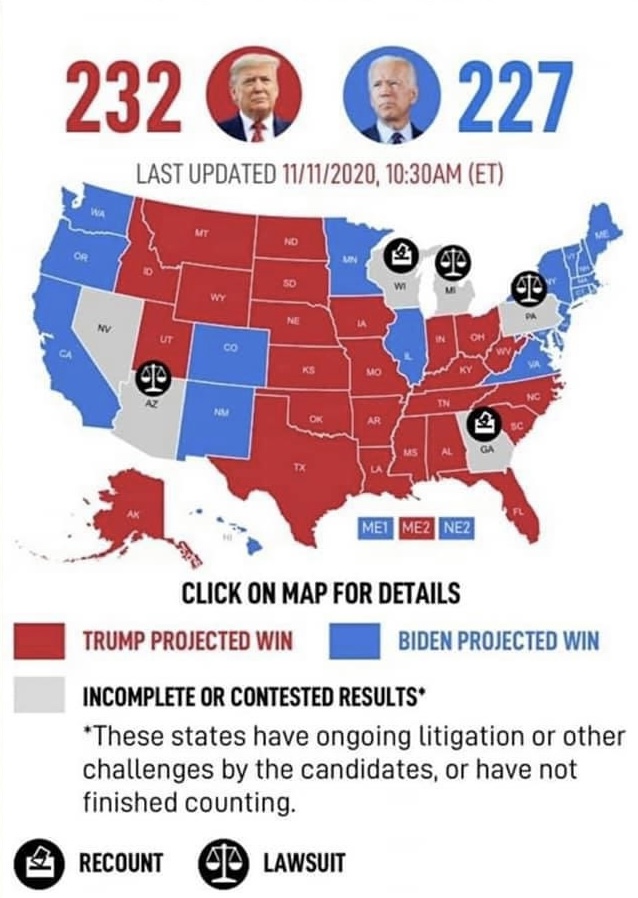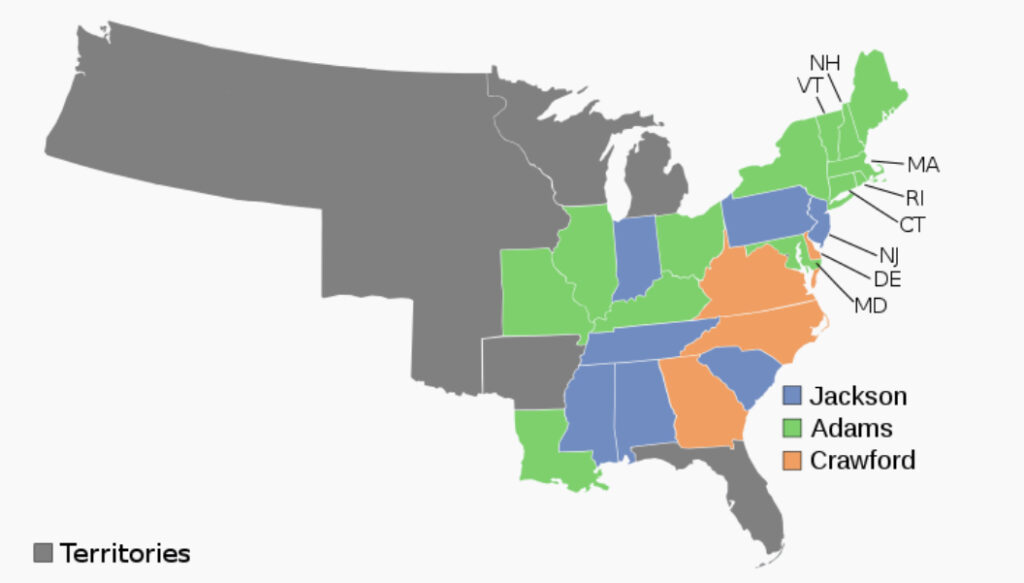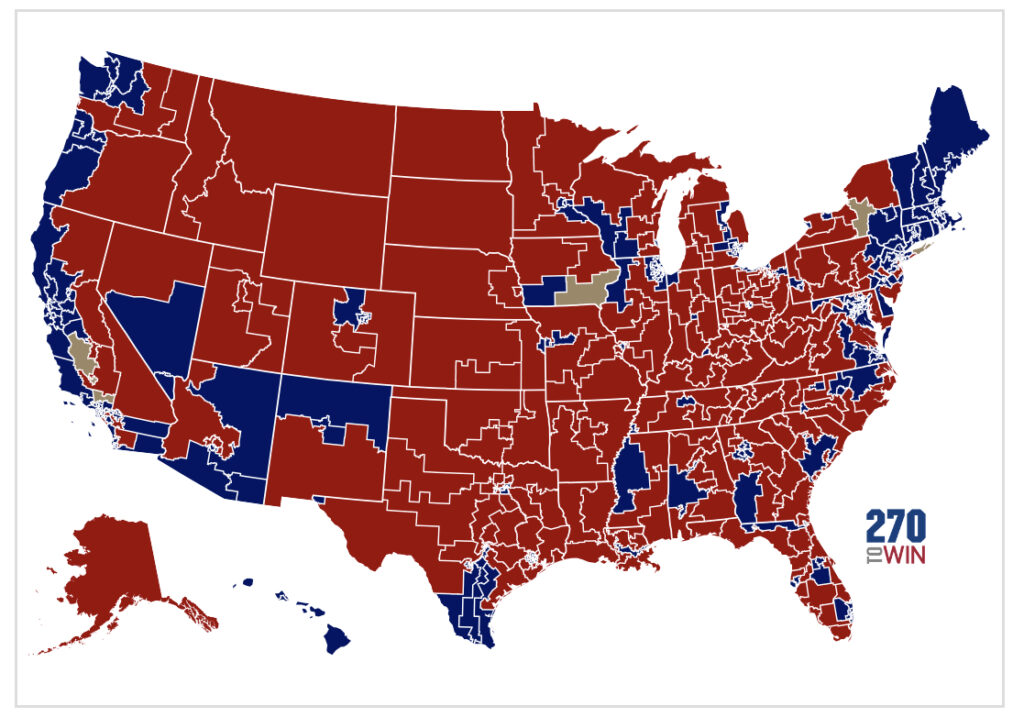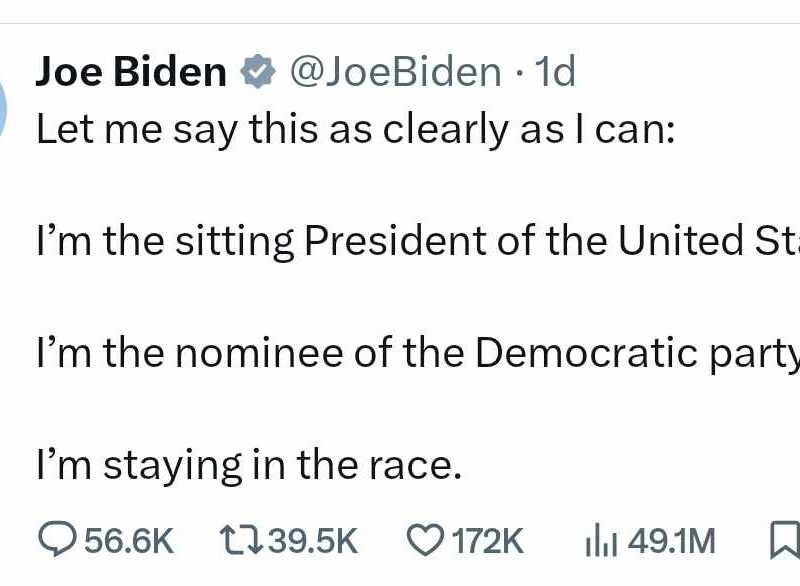2020 Vision: Contingent Election
One side believes there is rampant election fraud and wants the courts to correct the error by overturning the results. The other believes they have won, even though the election is incomplete, and will not accept “defeat” in the courts. One way or another, the election will not be seen as legitimate by half of the country. What happens if the election is inconclusive? The Framers of the Constitution built in a fallback: contingent election in the House of Representatives. It is imperfect, but in the current atmosphere of uncertainty this could provide a legitimate and wholly constitutional result outside of the courthouse. A contingent election in the incoming House of Representatives would likely lead to a second term for President Trump, but both candidates will have their fair chance.
Interested in learning more about Israel and current events in the Middle East? Visit Inside Israel News today!
Election Scrambled
On election night, it became clear as we approached midnight central time that President Donald Trump had a sizable lead and that his lead was holding steady. The President had won reelection. In the wee hours of the morning, however, hundreds of thousands of ballots were counted that were strangely, overwhelmingly, and in some cases entirely for former Vice President Joe Biden. The President’s lead evaporated in critical states.
As the final votes are being counted, the total number of votes counted are approaching 100% of total registered voters. There are concerns ranging from Republican poll watchers being prevented from observing ballot counting and verification to software that may have shifted votes from the President to his opponent. Many votes were cast by people who are dead. There are many concerns about equal protection of the law in this election. The 73 million people who voted for Donald Trump will not accept that this election was legitimate.
If the election stands as it is, half of the country will resist and ignore the entire federal government for the next four years and will never fully trust the outcome of any election ever again. If the courts begin to invalidate fraudulent or improperly counted ballots and the President’s leads are restored, then the other half of the country will likewise feel the election was illegitimate; not that this half ever accepted the results of the 2016 election in the first place. The media has run the story that former Vice President Joe Biden has won and is the President elect, even though the election is far from over. If the courts overturn Joe Biden’s narrow leads by invalidating fraudulent ballots, there will be riots in the streets. Businesses will be destroyed, many people will be hurt, and some Americans will lose their lives unnecessarily. The left will claim that President Trump stole the election even as he is merely defending the efficacy of the process.

Since neither side will accept the result, one way to address the matter is to look to a contingent election in the House of Representatives. Instead of just trying to have some of the illegal ballots invalidated, it might be easier simply to ask the courts to invalidate the electoral votes in the states wherein the fraud was the most egregious. Since the election results cannot be trusted, the states cannot appoint electors based upon them. Thereafter, criminal prosecution should be sought for election officials who violated the law to prevent future fraud. Thus, on January 6th, 2021, when Congress counts the electoral votes that have been cast, neither candidate will have a majority. This will trigger contingent elections for the President in the House of Representatives and the Vice President in the Senate.
The Contingent Election of 1801
Article 2, Section 1 of the US Constitution originally provided that each elector would cast two votes and the candidate who received the majority would win. If there was a tie in the electoral vote or if none of the candidates has received a majority of the total number of votes, the House of Representatives would elect the President. The House must vote by state delegations for President wherein each state has one vote and a majority of states is necessary to elect a President. A quorum of representatives from at least two-thirds of the states is necessary to hold the election. In 1801 the first contingent election was held when the two Democratic-Republican candidates, Thomas Jefferson and Aaron Burr, tied with 73 electoral votes. Under the original electoral college system, the runner up became the Vice President, but because Jefferson and Burr tied, the House had to choose one to be President while the other would become Vice President. Burr was originally running for Vice President, but being an ambitious, self-serving, and unprincipled man, Burr refused to concede and allowed himself to be considered as a candidate for President.

In 1801 the United States had sixteen states, thus nine states were needed to elect the President. At the time, the lame duck Congress elected at the previous election held the contingent election. Thus, the still Federalist controlled House elected in 1798 voted to break the tie. Northern Federalists voted for Aaron Burr because they thought him a moderate and Jefferson a dangerous radical. Burr carried 6 states to Jefferson’s 8. The delegations in 2 states, Maryland and Vermont, were evenly divided and they were considered abstentions. Some 35 ballots were taken in February of 1801 over the course of a week. The deadlock was finally broken when a compromise was reached prompted by General and former Secretary of the Treasury Alexander Hamilton who advocated vociferously for Thomas Jefferson’s election. Hamilton feared Burr’s ambition and lack of principles and felt Jefferson was the better man. Hamilton’s efforts in Jefferson’s favor and the compromise struck that Jefferson would leave the Federalist financial system in place, brought an end to the stalemate on the 36th ballot when Federalists in Maryland and Vermont voted present and thus allowed those states to vote for Jefferson giving him 10 states and the win.
It was due to this tie that the 12th Article of Amendment was drafted and later ratified to the Constitution in 1804. The 12th Amendment, states that electors vote separately for the President and Vice President. If there is a tie or neither candidate for each office has a majority, the House votes to elect the President and the Senate votes to elect the Vice President. The vote by state rule for the House was also continued.
The Contingent Election of 1825
In 1824 there were four major candidates for President of the United States. None achieved a majority of the electoral votes. General Andrew Jackson earned the greatest number of electoral votes but fell narrowly short of the majority. John Quincy Adams, son of former President John Adams, was a close second. Former Secretary of War and the Treasury William Crawford and longtime Speaker of the House of Representatives Henry Clay were distant third and fourth place, respectively. Interestingly, the fourth-place candidate, Speaker Henry Clay, was eliminated by the Constitution which allows only the top three candidates to be considered in the contingent election. Clay backed Adams for President, which led to Adams winning the election with the votes of 13 of the 24 states. Although Jackson had won the most electoral votes, he lost the contingent election to the runner up, John Quincy Adams. Clay would serve as Secretary of State for Adams, this led to the supposition that the two had arrived at some form of deal to win the contingent election together. Andrew Jackson ran again in 1828 and won the Presidency with a wide majority this time and was reelected in 1832, the last President to be reelected until Abraham Lincoln in 1864.

The Contingent Election of 1837
In 1837 a third and little-known contingent election was held for the Vice Presidency when several faithless electors in Virginia refused to vote for Richard Mentor Johnson for Vice President. As running mate for Democrat Presidential candidate Martin Van Buren, he should have easily won. Johnson was a war hero in the War of 1812, and a former Representative and US Senator from Kentucky. Johnson lived openly in common law marriage, however, with a mixed-race woman, Julia Chinn, who was regarded as one-eighth African-American (an octoroon in the parlance of that time). Julia was regarded as being mixed race legally and could not legally marry a white man as a result. Johnson flouted the racial taboos of the time, which led the faithless electors to protest his candidacy and withhold their votes. At the contingent election, the Senate proceeded to elect him Vice President with ease.
A Contingent Election In 2020
In the 18th and 19th Centuries the incoming Congress would not come together until about a year after they were elected. For that reason, it was the lame duck Congress that conducted the contingent elections. In 1800, it was the House elected in 1798 that conducted the election. In 1824, it was the House elected in 1822. The 20th Amendment, however, sought to end the practice of lame duck Congresses staying in Washington months after the election making laws and passing budgets even after many members might have been defeated in the recent election. Since 1934, the Congress takes office on the first Monday of January. Since the electoral votes are not counted until the incoming Senate meets, it would be the incoming House, the one elected this November (of 2020), that would conduct the election. A House in which the Republicans have gained at least eight seats and may have gained as many as eleven, leaving the Democrats with a razor thin majority.
Today, a candidate for President would need the votes of 26 states (a majority of 50) to win the Presidency. The House will have a choice of only the three candidates who earned the greatest number of electoral votes, which in this case would be narrowed to the only two candidates who earned any electoral votes: President Donald Trump and former Vice President Joe Biden. As described above, every state delegation would vote, and the state goes to the candidate who wins a majority of the Representatives from that state. If a state has 5 Democrat Representatives who vote for Biden and 3 Republicans who vote for Trump, then the state would vote for Biden. A state with a majority of Republicans who vote for the President, would go to Trump. If a state has a split delegation, say two representatives from each party who vote according to party lines; that state would abstain. Delegates from at least two-thirds of the states must be present to establish a quorum.
As it happens, even in the outgoing Congress, Republicans control 26 state delegations, enough to elect a president in a contingent election. If a close race in Iowa goes to the GOP, the Republicans will have a 27th delegation, and if the Democrat candidate wins that race, the Iowa delegation will be divided evenly two apiece. The Democrats control only 20 state delegations and three states are split. There is some opportunity for mischief, if a few strategically placed Republicans desert the President then Joe Biden would be elected President, but that is unlikely. If the President can prove that there was substantial election fraud, which would be necessary for a contingent election to be held in the first place, then Republicans will likely rally around the President. Those Republicans who might vote against the President are mostly be from deep blue states anyway where their votes cannot do much harm. With 26 or 27 state delegations for Trump to 20 for Biden, the President would likely be chosen for a second term. Learn more about the intricate details of a contingent election.
The Contingent Election in the Senate
In the Senate the Republican Party already has 50 seats (half of the 100 total) and with the tie breaking vote of Vice President Mike Pence, whose term does not end until noon on January 20th. The GOP will control the Senate at least through these first several weeks of the year. Two runoffs in Georgia have yet to be held, if the GOP candidate for either seat should win, the most likely result, then the GOP will retain control of the Senate. Should the Democrat candidates prevail in those runoff elections the Senate will be evenly divided, and control of the body will rest with the Vice President. Vice President Mike Pence could then have the awkward duty of casting the tie breaking vote to elect himself to a second term as Vice President.

In the event that the House has not completed its contingent election or the result is deadlocked as of noon on January 20th, 2021, then Vice President Pence would become Acting President until the House completes its election or the Presidential election is otherwise settled. Note that in this scenario, even if Joe Biden won the Presidency, Mike Pence would be Vice President. If Biden should vacate the office or should he be found to be incompetent to serve as President under the 25th Amendment, Mike Pence would succeed to the Presidency.
A Legitimate Election
In the distant past, contingent elections helped to decide heavily contested and incomplete presidential elections wherein no clear winner had emerged. In the current election debacle, the only thing that is certain is that the election result is not going to be acceptable to one side or the other. It is also not entirely clear whether the courts can adequately sort out the fraud and misconduct and offer a clear win to President Trump. One remedy is simply to say the election was inconclusive due to the degree of irregularity and allow the House of Representatives to choose a President.
If the courts are willing to prevent states from certifying their electoral votes or if the Congress rejects the votes of those states with fraudulent results, the Presidential election result would be inconclusive. So long as the President and/or his opponent refuse to concede the election, a long and arduous process will be played out. President Donald Trump is very likely to win a contingent election in the House of Representatives that can offer a legitimate path to his continuance in office.







